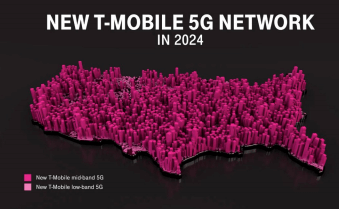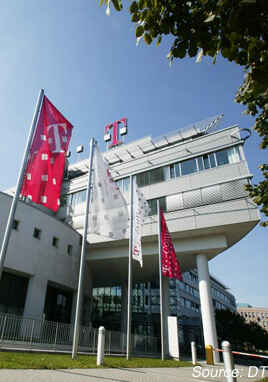T-Mobile US reported a record-setting first quarter in 2020, including record service revenues of $8.7 billion, up 5%, and record net income of $951 million, up 5%.
Some highlights:
- Branded net customer additions were 649,000 in Q1 2020, bringing the total branded customer count is 68.5 million.
- Branded postpaid net customer additions were 777,000
- Branded postpaid phone net customer additions were 452,000 down 204,000 year-over-year. This decrease was primarily due to lower gross additions impacted by reduced demand from social distancing rules and retail store closures arising from COVID-19, partially offset by lower churn.
- Branded postpaid other net customer additions were 325,000 in Q1 2020, down 38,000 year-over-year..
- Branded postpaid phone churn was a Q1 record-low 0.86% in Q1 2020, down 2 bps year-over-year, primarily impacted by the beginning effects of reduced demand from social distancing rules and retail store closures arising from COVID-19.
- Branded prepaid net customer losses were 128,000 in Q1 2020, primarily due to lower gross additions impacted by reduced demand from social distancing rules and retail store closures arising from COVID-19, partially offset by lower churn. Migrations to branded postpaid plans reduced branded prepaid net customer additions by approximately 115,000 in Q1 2020.
- Branded prepaid churn was a Q1 record-low 3.52%, down 33 bps year-over-year, primarily due to the continued success of our prepaid brands due to promotional activities and rate plan offers and the beginning effects of reduced demand from social distancing rules and retail store closures arising from COVID-19.
- Branded postpaid Average Revenue per Account (ARPA) was essentially flat year-over-year. Branded postpaid ARPA was primarily impacted by an increase in average customers per account due to the growing success of wearables, specifically the Apple Watch, and other connected devices, offset by an increase in our promotional activities, including the ongoing growth in the Netflix offering, a reduction in regulatory program revenues from the continued adoption of tax inclusive plans and a reduction in certain non-recurring charges including the impact of credits for restore fees, international calls and data usage in connection with our response to COVID-19.
- Branded postpaid phone Average Revenue per User (ARPU) decreased 1% year-over-year to $45.80.Branded prepaid ARPU increased 1% year-over-year to $38.11 in Q1 2020 primarily due the removal of certain branded prepaid customers associated with products now offered and distributed by a current MVNO partner, partially offset by dilution from our promotional activities, a reduction in certain non-recurring charges and growth in our Amazon Prime offering.
“Just five weeks ago, we merged with Sprint to create the New T-Mobile, and we’re more excited today than ever before about the massive value creation opportunity and synergy potential that lies ahead. We are off to the races laying the foundation for the future of the New T-Mobile as we work to execute on our business plan and harness the incredible opportunity ahead,” said Mike Sievert, President and CEO of T-Mobile. “In the face of a challenging climate for Q1, T-Mobile once again led the industry in postpaid phone net customer additions and set even more financial records, including record service revenues, record Q1 Net income and record Adjusted EBITDA. Additionally, I’m so proud of our teams for their creative and passionate work in the face of the COVID-19 health crisis as we continue to provide crucial connectivity to our customers and impacted communities, while ensuring the safety of our employees.”
While the COVID-19 pandemic has adversely impacted, and will continue to adversely impact, T-Mobile’s business and operating results, the company continues to work to ensure the health and safety of its employees, the ongoing reliability of its network, which continues to perform strongly and function with minimal interruptions, and the ability to serve and connect our customers. These prioritizations have resulted in key operational changes, affecting T-Mobile’s service revenues, equipment revenues, customer additions, churn rate and SG&A expenses, including increased labor costs. Additionally, T-Mobile continues to actively monitor and assess the impacts of COVID-19 on all facets of its business and operations, and as a result – the company is not in position to issue full year guidance, which depends on future developments that remain highly uncertain and unpredictable at this time, including the severity of the COVID-19 pandemic and related mitigation and response efforts. ”
- The Sprint merger was completed on April 1, 2020.








